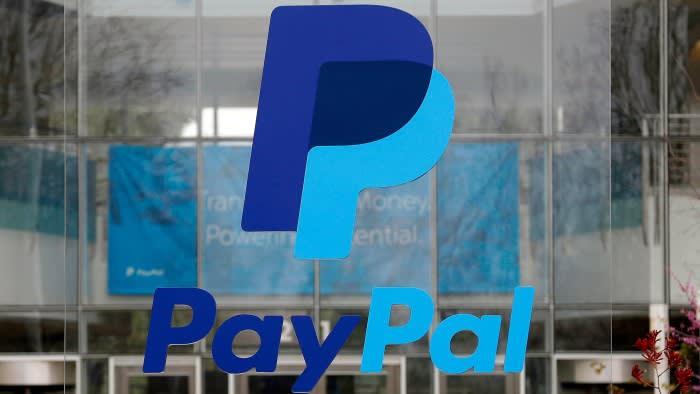Unlock the Editor’s Digest for free
Roula Khalaf, Editor of the FT, selects her favourite stories in this weekly newsletter.
PayPal has a generational problem. Younger shoppers’ penchant for Apple Pay, auto-fill payments and buy now, pay later services is eroding the company’s share of the online payment market it once dominated. Growth has sputtered. The share price has cratered from a high of over $300 in 2021 to less than $57. The valuation, at 11 times forward earnings, hovers near a record low.
Winning over the younger set will be key to newly installed chief executive Alex Chriss’s turnaround plans. He has called 2024 a “transition year” and promised to restore profit and margin growth. But PayPal’s latest results and guidance for flat adjusted profit for this year suggest there is no easy way to hit the reset button.
More people are opting to pay with a click or tap of their phones. Apple, by way of the iPhone, has been at the forefront of this trend. Three-quarters of global iPhone owners used Apple Pay in 2022, according to Deepwater Asset Management. The adoption is particularly pronounced among those aged 18-29 according to Mizuho. In a survey it conducted, nearly a third of consumers who prefer Apple Pay are in that age group. Conversely, nearly 50 per cent of those who prefer PayPal are 45 years old and above.
Changes to the desktop checkout experience in recent years such as auto-fill, and the rise of buy now, pay later start-ups such as Affirm or Afterpay have further lured users away from PayPal.
Total active accounts fell by 9mn to 426mn in 2023. Revenue growth for the year, which once hovered between 18-20 per cent, came in at just 8 per cent. The slowdown is most notable in its main branded payment business. This is the PayPal button that consumers see on website checkout pages. Payment volume from the unit grew just 6 per cent in 2023.
Growth has been stronger in its Braintree unit, which provides unbranded payments technology to merchants. But this is far less lucrative than the branded business. The latter represents 29 per cent of total payment volume. But it generates about 80 per cent of net transaction profits — a proxy for gross profit, said Mizuho.
PayPal does have Venmo, a peer-to-peer payment app that is popular among young people. Monetising it is the problem.
Charging people to use the app is hard when rivals like Zelle are free. PayPal needs a credible plan to win over the youngsters — and make them pay — if it wants investors to check in again.
Lex is the FT’s concise daily investment column. Expert writers in four global financial centres provide informed, timely opinions on capital trends and big businesses. Click to explore

Alex Mitchell is your go-to expert for all things mobile. With a passion for the latest smartphones, apps, and mobile innovations, Alex provides in-depth reviews, insightful analyses, and breaking news about the ever-evolving world of mobile technology. Stay connected with Alex to navigate the fast-paced realm of mobile devices.


